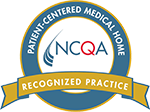The Dangerous Side of the Sun: Pediatric Sun Protection
We all know that sunburns are serious. But did you know that your risk for developing melanoma, the most serious type of skin cancer, doubles if you have had more than five sunburns. Now consider your child and their perfect, unblemished skin. No matter if they have a fair or dark complexion, they are not immune to the damaging rays of the sun and the susceptibility to getting sunburn. It is your duty as parents to protect their skin and provide them with the knowledge needed to continue that trend as they grow.
Protecting your child’s skin from the sun starts with the right sunscreen, however, it should not be applied to infants under 6 months of age. If you teach your child from the start that sunscreen is a non-negotiable, you are less likely to get pushback later on.
If they are already squirmy and anti-sunscreen, a different approach is required. Make applying sunscreen fun. Grab a timer and have them time how fast you can properly apply sunscreen to them. You could also play connect the dots by putting an ample amount of sunscreen as dots on their exposed skin. Next ask them to connect the dots by spreading the sunscreen around their bodies. Be sure to check them to ensure they did a good job of coating their skin. If you have more than one child, have a sunscreen applying competition. Whoever applies their sunscreen the best wins (you decide the prize).
Here are additional tips to help protect your child’s skin and more.
How Much and How Often?
The sun is the strongest between the hours of 10am- 4pm. Try to limit exposure during this time. Golf ball sized amounts of sunscreen should be applied to all exposed skin prior to heading outdoors. It should be reapplied at least every 2 hours or more frequently if time is spent in the water.
Letting Older Kids Apply Sunscreen
As kids get older it is important that they learn how to properly apply sunscreen. It is however, important that they not be left to apply sunscreen on their own. Children should be supervised to ensure all exposed body parts have copious amounts of sunscreen applied.
Does a Higher SPF Actually Matter?
The short answer is that it matters to a point. The SPF level refers to the amount of UVB protection the sunscreen provides. An SPF of 15 block 93% of UVB rays, while an SPF of 30 blocks almost 97%. SPF levels that are above 50, which block 98% of UVB rays, have minimal benefits.
We recommend that you and your child wear a minimum SPF of 30 and a maximum of 50. Be sure your sunscreen also provides UVA protection. This is found in products containing zinc oxide, titanium dioxide, avobenzone and oxybenzone. You may also notice that these products are labeled “broad spectrum.”
Safety Tip: Try to avoid products containing oxybenzone due to the potential health risks associate with it. Bear in mind that it is always safer to use sunscreen than to go without.
How to Treat Sunburn
The signs of sunburn can take hours to appear so it is important to not wait until one appears to get out of the sun. Treatment depends on the severity of the sunburn. For mild cases, cool compresses, acetaminophen (age appropriate) and aloe vera gel do wonders. For more severe cases involving blisters, fever, chills or other signs of illness, it is important to call your pediatrician.
Remember that sunscreen isn’t enough protection. A sun hat and rash shirt are excellent additions to protect your child’s perfect skin from future problems. It is up to you to protect your children from the pain that comes from getting sunburn and, down the road, skin cancer. If you would like to know more about skin cancer, sun protection or would like to make an appointment with our qualified team of pediatric professionals, give us a call at 910-486-5437 or visit us online.







